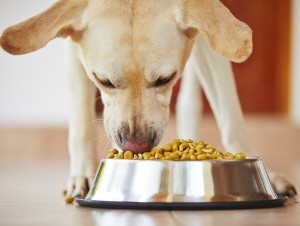 With so many different pet food choices– grain-free, natural, organic, hypo-allergenic–more and more people are carefully reading the labels and ingredients. And one ingredient that often jumps out at many pet owners is “animal byproducts.”
With so many different pet food choices– grain-free, natural, organic, hypo-allergenic–more and more people are carefully reading the labels and ingredients. And one ingredient that often jumps out at many pet owners is “animal byproducts.”
No denying it. The term byproducts typically inspires a rather unpleasant reaction from pet owners. However, is that bad rap deserved or just a misunderstanding over what animal byproducts in your pet’s food really means? The only way to answer that correctly is to delve a little deeper into the issue.
What Exactly Are Animal Byproducts?
Many people have the mistaken idea that animal byproducts are inedible waste with little or no nutritional value—things such as hair, feathers, horns, teeth, and hooves. According to the American Association of Feed Control Officials (AAFCO), an agency that provides guidelines and regulations for the pet food industry, meat and poultry byproducts are non-rendered, clean parts of the animal, like the heart, kidney, liver, spleen, blood and bone. They DO NOT include hair, feathers, horns, teeth and hooves.
Byproduct components contain essential minerals and nutrients that keep your pet healthy. For example, the liver provides iron, and Vitamin A and B12, which support the nervous system, growth and vision. Bones are a good source of calcium and magnesium, which are essential for strong bones and teeth. And connective tissue supplies chondroitin, which is good for joint health. Byproducts are not just gross filler ingredients, but rather, important nutritional components of your pet’s food. However, not all byproducts are the same, and it’s important to know the differences so that you can better decipher the pet food label.
Meat Byproducts, Poultry Byproducts, Byproduct Meal: Decoding the Confusion
On a pet food label, you may see animal byproducts, meat byproducts, poultry byproducts, and meat or poultry byproduct meal. Here’s a brief overview of the differences among the various byproduct types:
Basically, meat and poultry byproducts are as described above—the non-rendered, clean parts of the animal. Meat byproducts may be beef, pork or lamb or a combination, whereas poultry may be chicken, turkey or duck. The difference between those byproducts and byproduct meal is that the meal is rendered into a dry meal. They have the same nutritional value.
Where the difference comes in is in the quality and percentage of the ingredients in the byproducts and byproduct meal. A reputable, high-quality pet food manufacturer will use byproducts from a food-grade slaughterhouse, processed under the supervision of a veterinarian. No roadkill, diseased or euthanized animals. They will also use a healthy mix of quality byproduct ingredients such as liver, heart and kidneys, rather than 90% feet. Unfortunately, pet food manufacturers are not required to disclose this information. However, many reputable brands will specifically label the byproduct contents (for example, 50% organ meats). Steer clear of foods that simply state animal byproducts.
Your veterinarian, not your pet food retailer, is your best resource for pet nutrition information. He or she can provide the facts, dispel the myths, and make recommendations. If you have questions about the best pet foods for your furry friends, contact Powell Veterinary Service at 970-352-9164.



WORKING HOURS:
Monday-Friday 8:00am - 5:00pm
Saturday 8:00am - 12:00 noon